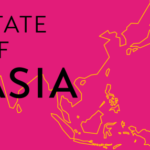who invaded ethiopia in 1935 was a significant event in history that plunged the nation into a dark chapter of oppression and suffering. This article aims to delve into the details of this invasion, uncovering the culprit behind it and exploring the motives and reasons that led to such a devastating act. By understanding the historical background, impact, and legacy of this invasion, we can gain a deeper appreciation for the resilience and strength of the Ethiopian people. Join me on this journey as we unravel the mysteries surrounding this dark chapter in history.
Historical background leading up to the invasion
To fully comprehend the invasion of Ethiopia in 1935, it is crucial to examine the historical context that preceded it. Ethiopia, often referred to as Abyssinia at the time, had long maintained its independence and sovereignty amidst European colonial expansion in Africa. However, the rise of fascist ideologies in Europe posed a significant threat to Ethiopia’s stability. Mussolini’s Italy, seeking to establish a colonial empire, eyed Ethiopia as a valuable acquisition. Italy’s aggressive maneuvers in neighboring countries heightened tensions and set the stage for the invasion that would soon unfold.
The culprit behind the invasion – Who invaded Ethiopia in 1935?
In 1935, it was Italy, under the leadership of Benito Mussolini, that invaded Ethiopia. Mussolini’s fascist regime sought to revive the glories of the Roman Empire and expand Italy’s influence in Africa. Ethiopia, with its rich resources and strategic location, presented an enticing opportunity for Italian expansion. Mussolini aimed to exert dominance and establish Italian East Africa, erasing Ethiopia’s independence in the process. The invasion was a blatant act of aggression, fueled by imperialistic ambitions and a desire for power.
Motives and reasons for the invasion
The motives behind Italy’s invasion of Ethiopia were multifaceted and interconnected. Firstly, Mussolini aimed to avenge Italy’s previous defeat at the hands of Ethiopian forces in 1896, known as the Battle of Adwa. This humiliating loss had left a lasting impact on Italy’s national pride and served as a catalyst for future aggression. Secondly, Italy sought to exploit Ethiopia’s abundant natural resources, including coffee, gold, and fertile lands. The economic potential of these resources fueled Italy’s desire to establish control over the region. Additionally, the invasion served as a demonstration of Italy’s military might and a showcase for fascist ideologies, aiming to inspire fear and admiration both domestically and internationally.
The impact of the invasion on Ethiopia and its people
The invasion of Ethiopia in 1935 had a devastating impact on the nation and its people. Ethiopian resistance was met with brutal force, as Italian troops employed ruthless tactics such as chemical warfare and indiscriminate bombings. Countless innocent civilians were killed, villages were destroyed, and cultural heritage was pillaged. The Ethiopian people faced unimaginable suffering under Italian occupation, enduring oppression, forced labor, and widespread human rights abuses. The invasion shattered the country’s infrastructure and disrupted its social fabric, leaving a lasting scar on the Ethiopian consciousness.
International response to the invasion
The international response to the invasion of Ethiopia in 1935 was a complex and nuanced issue. While some nations condemned Italy’s aggression and supported Ethiopia, others turned a blind eye or even aided the invaders. The League of Nations, for instance, condemned Italy’s actions but failed to take effective measures to halt the invasion. The geopolitical landscape and the self-interest of various nations played a significant role in shaping their responses. The lack of unified international action allowed Italy to continue its aggression unchecked, further exacerbating the suffering of the Ethiopian people.
Legacy and repercussions of the invasion
The legacy of the invasion of Ethiopia in 1935 continues to reverberate through history. It stands as a stark reminder of the devastating impact of imperialism and the lengths to which nations will go to satisfy their thirst for power. The invasion shattered Ethiopia’s independence and left a scar on its national identity. However, it also galvanized the Ethiopian people and fueled their determination to reclaim their freedom. The invasion served as a catalyst for resistance movements and inspired a renewed sense of pride and unity among Ethiopians.
Uncovering lesser-known facts about the invasion
While the invasion of Ethiopia in 1935 is a well-documented historical event, there are lesser-known facts that deserve attention. One such fact is the significant role played by Ethiopian women in the resistance movement. Women like Empress Menen Asfaw and Woizero Abebech fought alongside their male counterparts, demonstrating immense courage and resilience. Another lesser-known fact is the international volunteers who joined the Ethiopian resistance, including individuals from countries such as Mexico, Poland, and Sweden. These lesser-known facts shed light on the diverse and inspiring stories that emerged from this dark chapter in history.
Conclusion and reflection on this dark chapter in history
The invasion of Ethiopia in 1935 remains a dark chapter in history, marked by brutality, oppression, and the struggle for freedom. It serves as a reminder of the enduring spirit of the Ethiopian people and their unwavering resilience in the face of adversity. As we reflect on this tragic event, it is crucial to honor the memory of those who suffered and to learn from the mistakes of the past. By understanding the culprits, motives, impact, and legacy of this invasion, we can strive for a more just and peaceful world, where the rights and sovereignty of all nations are respected.


